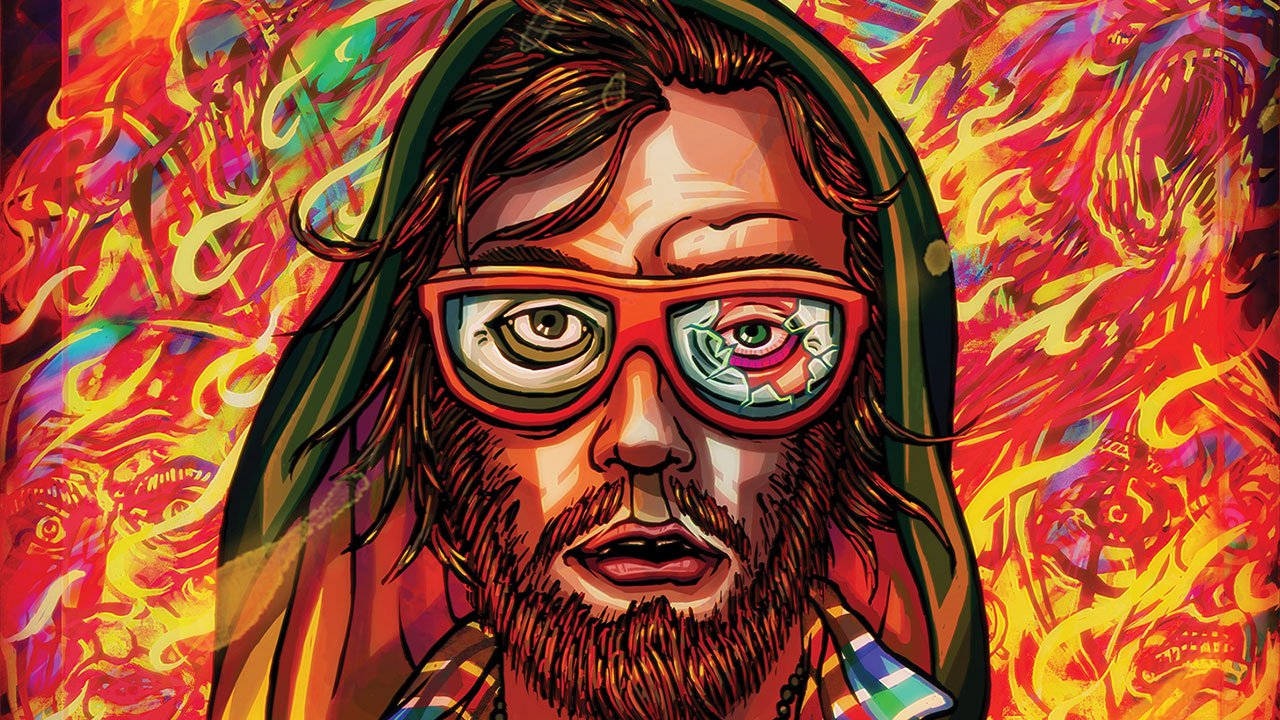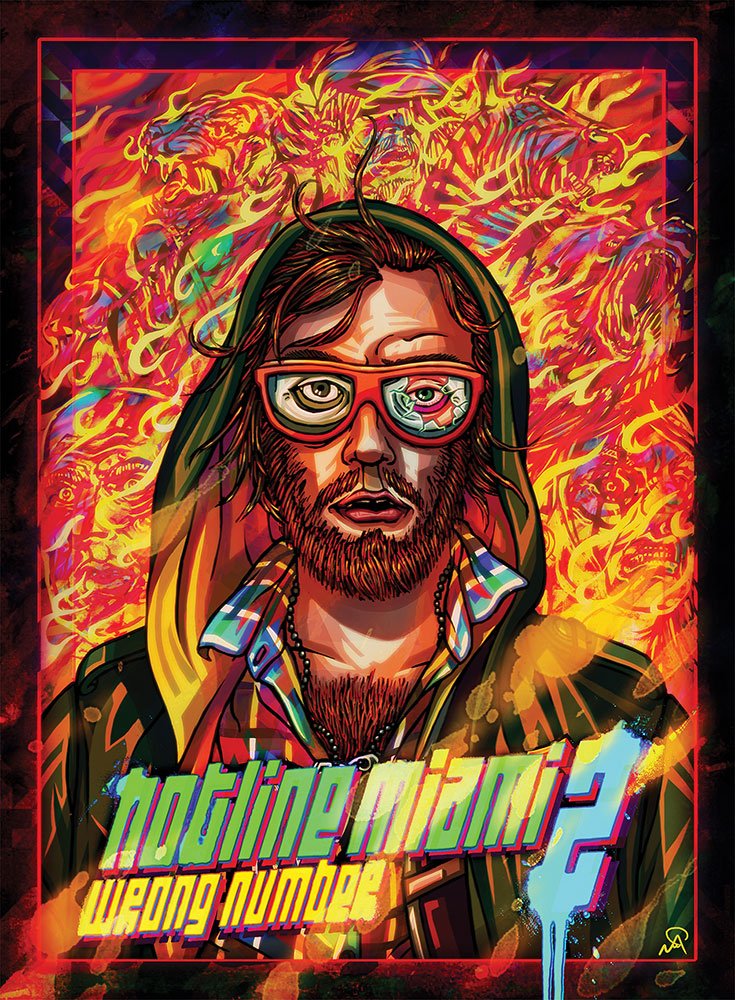Hotline Miami represents a very specific moment in time. When it was released in 2012, Dennaton Games’ debut came as something of a shock: the intense speed of its combat, pulsing backbeat of its electronic soundtrack, and incredible violence depicted through its chunky, almost amateur-ish graphic style were hard to ignore. It was a short, brutish game that told its vague crime story with just enough detail that its ham-fisted attempt to guilt players over their enjoyment of the gory experience could be interpreted charitably. Hotline Miami was a well-executed statement—an adrenaline-soaked shot in the arm that marked the emergence of a bold new developer.
Hotline Miami 2: Wrong Number is different.
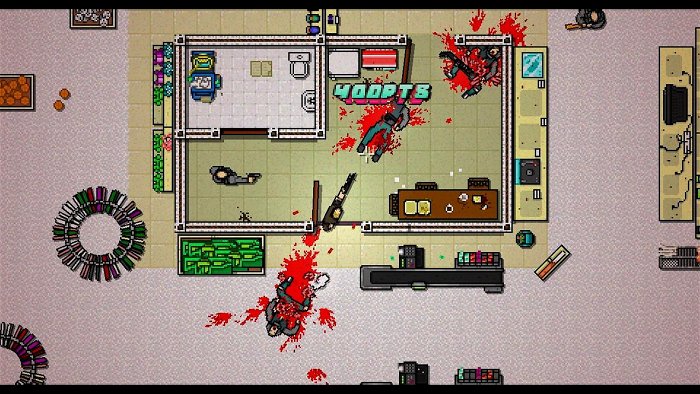
This shouldn’t come as too much of a surprise—Hotline Miami is a game that never seemed like it needed a sequel. It succeeds at accomplishing exactly what it sets out to do in its short runtime. Each of its levels is tightly crafted, the challenge ramping up in perfect proportion to the player’s increasing skill, and it comes to a close right around the time its premise begins to wear thin. Despite this, Wrong Number exists and, for better or worse, expands on nearly every aspect of the first game’s premise. The change becomes apparent within the sequel’s first few levels. Though the visual style and control scheme remain nearly identical—moving and shooting through the overhead areas is still strange to get accustomed to, but, with practice, is just as precise as the twitch-based, one-hit kill combat requires—almost everything else has changed.
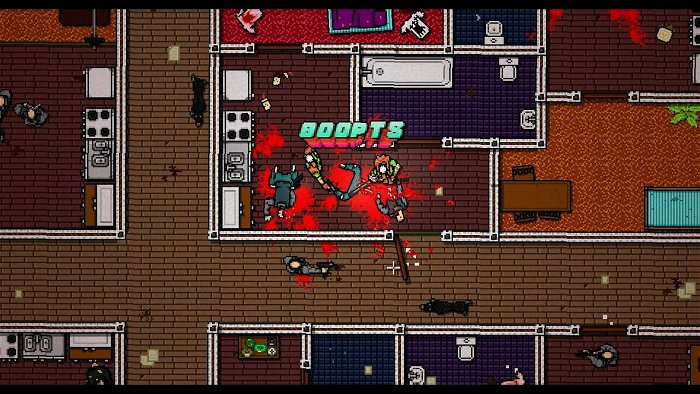
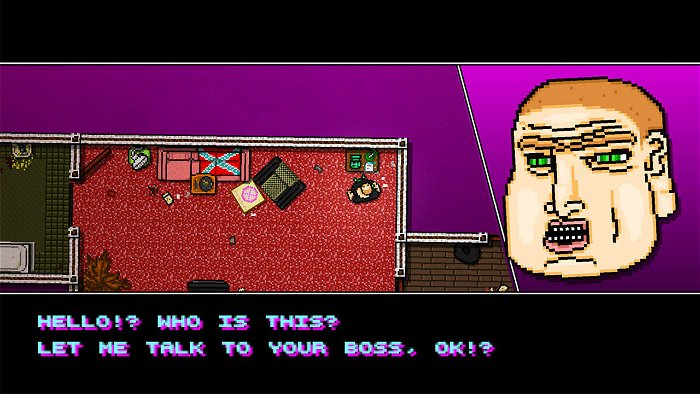
After a short tutorial/introduction, players quickly finds themselves thrown into levels that are far larger than all but the final few chapters of the first game. And, given that the objective of each mission is to kill every last enemy without being taken down (by a single punch or bullet) in the process, this means that the difficulty is greatly increased almost immediately, too. Wrong Number’s environmental design features wide-open hallways for knife-wielding mobsters to launch ambushes from, windows for bullets to come spraying through, and distant areas hidden far enough from view that a guard dog can come hurtling at the player’s throat from what seems like nowhere. While the much larger levels occasionally result in extra tension—especially when twenty minutes of sweaty-palmed room clearing has left only a handful of enemies to dispatch—it’s more often that repeating the same initial bits of an encounter again and again (and again) simply leads to frustration. The original Hotline Miami was designed in such a way that only its last chapters required the player to repeat such long stretches—in Wrong Number, more than two thirds of the game is made up of these gruelling levels. And though this does give the sequel a markedly different feel, it can also render some of its tougher stages a chore to complete.
Even as the game impresses with its tightly honed combat design, minimalist visual style, and fantastic soundtrack, it also repels with its nihilistic worldview and heartless, cruel characters.
The greatly increased cast of playable characters featured in the game go some way toward making each new level exciting to begin, however. Instead of the original’s pair of controllable characters, Wrong Number stars a group of copycat killers who wear masks inspired by the first game’s protagonist, a cop obsessively set on tracking down a serial murderer, a writer hoping to find material for his book by chasing criminal leads, a pill-popping mobster and his homicidal boss, as well as a soldier sent to wipe out enemy military camps. Each of these many different characters fights with their own unique style—the writer will use melee weapons, but not guns; the soldier can swap between bayonet and rifle with a click of the button; two of the copycat killers work as a pair, the player controlling both as they use chainsaw and firearms to clear levels. The variety in play represented by the expanded cast may not do much to alleviate the issues that the overly large maps provide, but it does ensure a continuous novelty to each new mission.

Wrong Number’s plot is also broader as a result of its increased number of characters. And, like the gameplay, following the story can be a bit challenging. Keeping track of the different timelines and factions of mobsters, soldiers, vigilantes, and police is made difficult as the perspective changes with almost every chapter, but it’s unpacking the meaning of the deliberately opaque overarching storyline that is hardest. Whether it’s worth the effort to do so isn’t easy to say. Wrong Number, more than a direct continuation, is an expansion and affirmation of Hotline Miami’s themes. Its story is rich in detail, but ultimately feels as if it’s elaborating at great length on the same issues—namely, the aimlessness of violence—that the original was concerned with. This isn’t meant to entirely discount what it accomplishes, which is substantial as an exercise in broadening what was previously a neatly confined narrative, but to question the worth of the entire affair. There may be plenty of interesting allusions to the previous game for the dedicated player to seek out and satisfying links to be found between the dreamlike plot points of both games, yet the end result comes off as somewhat unnecessary.
